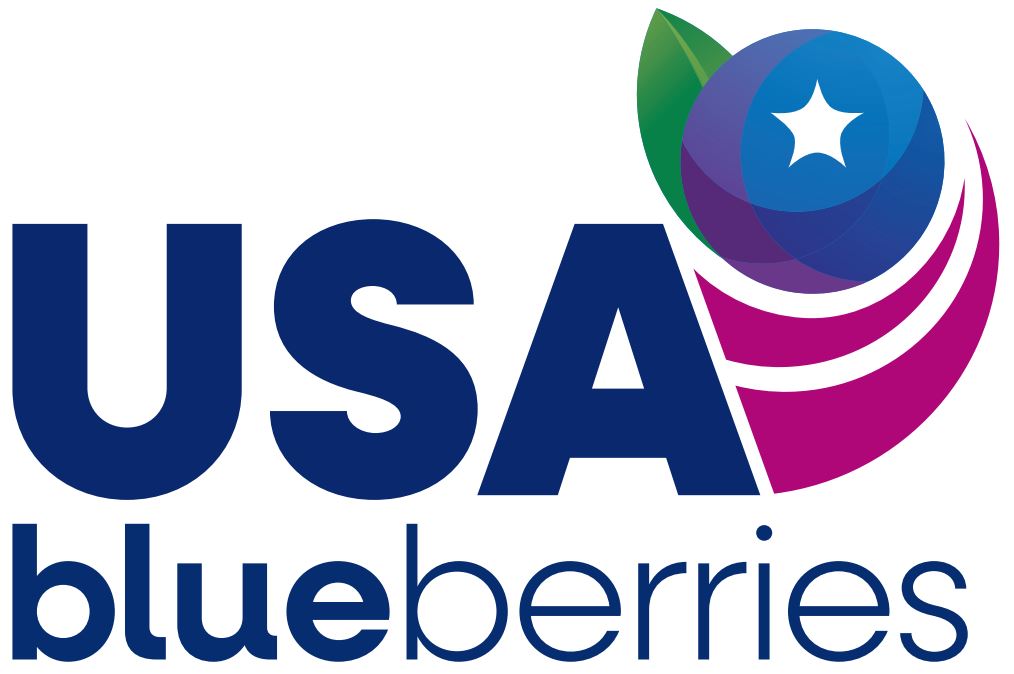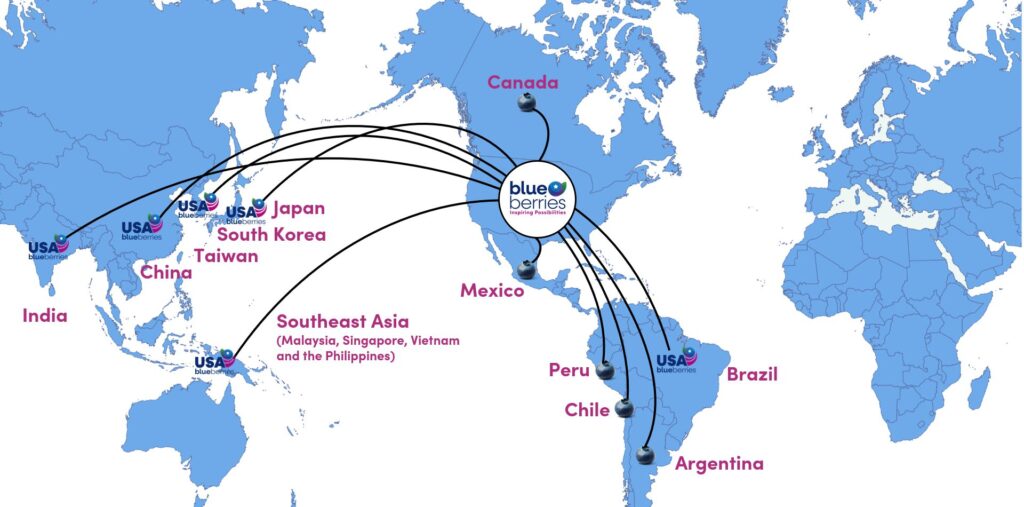Global Market Development
USHBC does extensive work to drive demand for U.S. highbush blueberries with consumers, foodservice operators, food manufacturers and retailers around the world. In addition to technical export assistance, we conduct in-country market research and promotional programs. If you’re exporting or planning to export your blueberries, we’re your partner.
Our Export Database has complete international market data for all the markets USHBC has opened over the years, including information on trade agreements and regulations.
2024 Blueberry MRL Guidance
As the 2024 blueberry season is underway and crop protection decisions are being made, the U.S. Highbush Blueberry Council (USHBC) worked with Bryant Christie Inc. (BCI) to provide the U.S. blueberry industry an international blueberry maximum residue level (MRL) memo for major export markets.
The purpose of this memo is to provide blueberry growers and shippers with relevant information on blueberry MRLs in key export markets. Within, users will find the latest blueberry MRLs through March 26, 2024, in the United States (U.S.), Australia, Canada, China, the European Union (EU), Great Britain (GB), India, Japan, Korea, the Philippines, Taiwan, and Viet Nam. The memo is divided into sections by country, and for each country includes: the active ingredient, trade name, the U.S. highbush blueberry MRL, the foreign country MRL, data on how much of the product has been applied, and residue data available from USDA. Where a residue potentially might exceed an MRL, that information is highlighted.
The memo also includes whether the chemical is included in the country’s residue testing list. This information comes from official monitoring lists and is subject to change. Not all markets publish such lists.

Our new export brand for USA Blueberries was created to raise awareness of the quality and food safety assurance of U.S. grown blueberries. Contact Kristy Babb at [email protected] if you’d like to use it on your exported blueberries – it’s free!
Export Market Opportunities
Brazil
There is growing interest from Brazilian companies in frozen, dried and pureed blueberries. In 2019, the U.S. was the second largest source of imported dried blueberries, and USHBC’s work supports Brazilian companies in formulating products with processed U.S. blueberries.
Chile
In December 2020, the U.S. blueberry industry secured market access to Chile for fresh blueberries from the states of California, Oregon, and Washington. The industry is now working with APHIS to expand access to additional U.S. states.
China
In 2019, the U.S. was the largest known source of frozen and dried blueberry imports. After diligent efforts by the USHBC and other U.S. trade entities, U.S. fresh blueberries were granted market access to China in 2020.
India
India’s large population and the growing popularity and imports of blueberries make it a key market for USHBC. Ongoing efforts include work to connect U.S. blueberry suppliers with buyers in all market categories (food manufacturing, retail and foodservice).
Japan
There is growing interest from Brazilian companies in Japan is a long-standing target market to for the U.S. highbush blueberry industry. Since January 1, 2020, fresh and dried U.S. blueberries enter Japan duty-free under the U.S.-Japan Trade Agreement (USJTA).
Korea
Tariffs on U.S. blueberries entering Korea reached zero as of January 1, 2021 under the U.S.-Korea Free Trade Agreement (KORUS). USHBC has targeted the Korean blueberry market with promotions for in-store and online retail, and awareness efforts touting blueberry health benefits.
The Philippines
A new and growing market opportunity for fresh U.S. blueberries, USHBC and U.S. trade entities supported U.S. fresh blueberries gaining market access to the Philippines in May 2020.
Vietnam
In February 2019, U.S. fresh blueberries were granted market access to Vietnam and accounted for 60% of the Vietnamese fresh blueberry market in the first shipping season.

Other Export Resources
Arrival Inspection Record Form
The Arrival Inspection Record Form shows proof of monitoring production fields for the presence of larvae in fruit. This documentation is required for shipping to China (from California, Oregon and Washington), the Philippines and Vietnam.
International MRL Memo
This report includes relevant information on blueberry maximum residue levels (MRLs) in key export markets. Register for the MRL database at MRLDatabase.com or GlobalMRL.com, and check the sites for updates.
Residue Decline Curve Study
The U.S. Highbush Blueberry Council (USHBC) has collaborated with Oregon State University, Michigan State University, AG Metrics Group, and Synergistic Pesticide Laboratory, LLC to establish residue decline curves for pesticides that have no established Maximum Residue Limits (MRL) and MRLs are lower than U.S. tolerances.
As a result of this research study, several insecticides and fungicides can be applied to blueberries for export markets that could not have been used previously.
Global US Blueberry Export Opportunity Assessment Report
Optimize your international market strategy with this comprehensive report. Backed by Euromonitor’s data, government statistics, and interviews with key exporters, we identify top markets for US Blueberry exports. Discover market priorities, and potential for fresh, frozen, and dried blueberries, including an actionable SWOT analysis. Gain valuable insights in retail, food service, and food manufacturing channels. Strategically focus your promotional efforts and drive global demand for US Blueberries using our Prioritization Scorecard and market analysis.
Export Market Registration is Open for the 2024 Shipping Season
For companies that plan to export to Vietnam, the Philippines, China, and Chile in 2024, it’s time to register your packing facility. Please complete this form to submit or update your facility registration information to the U.S. Highbush Blueberry Council. Registration is required annually and closes this year on Friday, Dec. 22. If you register a new facility, the Animal and Plant Health Inspection Service (APHIS) will contact you to confirm approval.
“There are so many opportunities out there. It’s just going to take some more vetting, conversations and travel. ”
Stacy Spivey
Director of business development – North America at Alpine Fresh, Inc.
